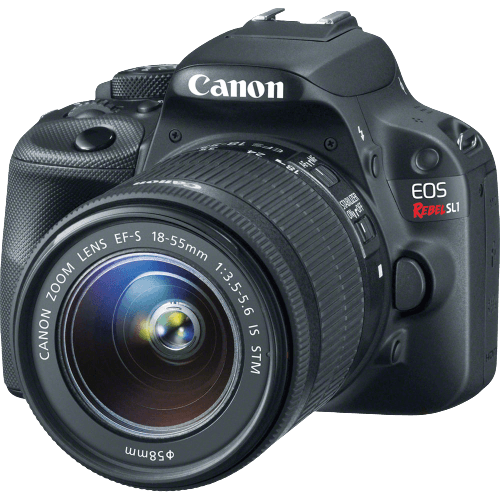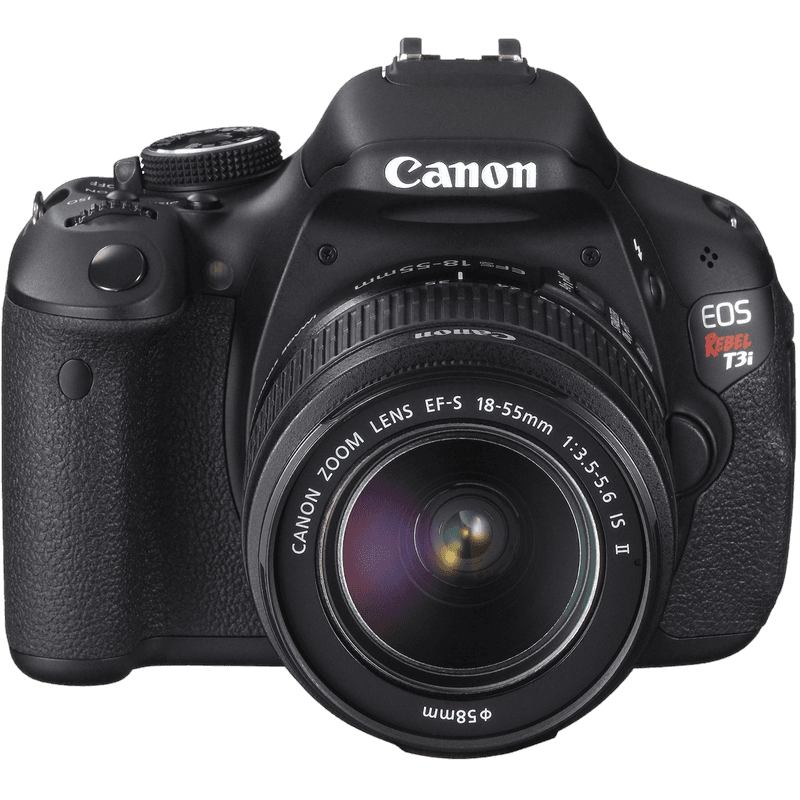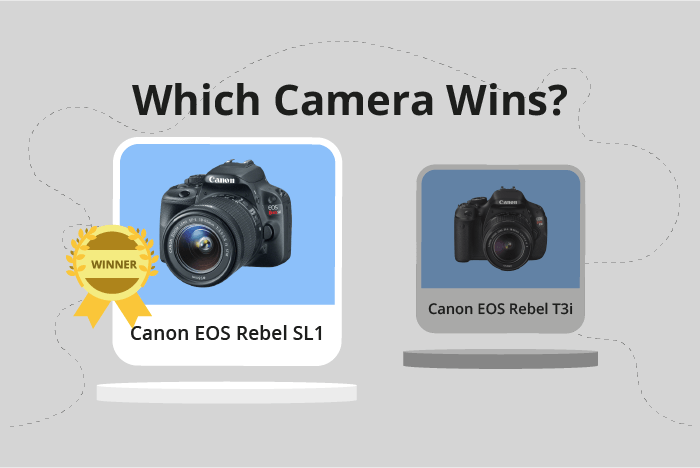Canon EOS Rebel SL1 / 100D vs EOS Rebel T3i / 600D Comparison
Canon EOS Rebel SL1 / 100D

Canon EOS Rebel T3i / 600D

The Canon EOS Rebel SL1 / 100D emerges as the winner with a score of 43/100, slightly ahead of the Canon EOS Rebel T3i / 600D, which scored 40/100. Both cameras are DSLRs and were released in 2013 and 2011, respectively, with launch prices of $650 and $850.
The two cameras share similarities in their DSLR type and Canon branding. However, the SL1 / 100D stands out due to its smaller size (117 x 91 x 69mm) and lighter weight (407g / 0.90lbs), making it more portable and user-friendly. On the other hand, the T3i / 600D is larger (133 x 100 x 80mm) and heavier (570g / 1.26lbs), but this does not necessarily translate to better performance.
In the end, the Canon EOS Rebel SL1 / 100D earns its higher score due to its compact size and lighter weight, offering greater convenience for photographers. The T3i / 600D, while slightly behind in score, still remains a viable option for those who don’t mind a larger and heavier camera.
Canon EOS Rebel SL1 / 100D vs EOS Rebel T3i / 600D Overview and Optics
The Canon EOS Rebel SL1 / 100D and the Canon EOS Rebel T3i / 600D both score 40/100 in optics, indicating that they have similar optical capabilities. They share common specifications, such as 18-megapixel resolution, CMOS sensor type, APS-C sensor size, Canon EF-S lens mount, and absence of image stabilization.
The Rebel SL1 / 100D has some advantages over the Rebel T3i / 600D. It has a faster shooting speed of 4 frames per second (fps) compared to the T3i’s 3.7 fps. This allows the SL1 / 100D to capture action shots more effectively. Additionally, it features a more advanced processor, the Digic 5, which provides better image processing and overall camera performance.
However, the Rebel T3i / 600D also has its strengths. It has a slightly higher DXOMARK score for its sensor, 65 compared to the SL1 / 100D’s score of 63. This means the T3i / 600D has a marginally better sensor performance in terms of color depth, dynamic range, and low-light capabilities.
In terms of optics, both cameras have their respective advantages. The Rebel SL1 / 100D offers a faster shooting speed and an improved processor, making it better suited for action photography and efficient image processing. On the other hand, the Rebel T3i / 600D has a slightly better sensor performance for capturing images with greater detail and in challenging lighting conditions. Ultimately, the choice between these two cameras depends on the specific needs and preferences of the photographer.
Canon EOS Rebel SL1 / 100D vs EOS Rebel T3i / 600D Video Performance
The Canon EOS Rebel SL1 / 100D and the Canon EOS Rebel T3i / 600D both have a video score of 43/100. This means that neither camera outperforms the other in terms of video capabilities, as they share the same score. They both have a maximum video resolution of Full HD and max video dimensions of 1920 x 1080. Additionally, both cameras have a max video frame rate of 30fps and lack built-in time-lapse functionality.
There are no clear advantages in video capabilities between the Canon EOS Rebel SL1 / 100D and the Canon EOS Rebel T3i / 600D. Since both cameras share the same specifications, it is difficult to determine which camera is better based on video capabilities alone. The tie in video score reflects the similarities in their video features.
Despite their equal video scores, it is essential to consider other factors when deciding which camera is better. For example, the Canon EOS Rebel SL1 / 100D is known for its compact size, while the Canon EOS Rebel T3i / 600D offers an articulating screen. These additional features could influence a user’s preference for one camera over the other, depending on their specific needs.
To conclude, the Canon EOS Rebel SL1 / 100D and the Canon EOS Rebel T3i / 600D have identical video capabilities. Their equal video scores and shared specifications make it challenging to determine a clear winner in this category. However, other factors, such as size and screen functionality, may impact a user’s decision when choosing between these two cameras.
Canon EOS Rebel SL1 / 100D vs EOS Rebel T3i / 600D Features and Benefits
The Canon EOS Rebel SL1 / 100D emerges as the winner with a feature score of 57/100, while the Canon EOS Rebel T3i / 600D trails behind with a score of 44/100. Both cameras share common specifications, including a 3-inch screen size, 1,040,000-dot screen resolution, and lack of GPS, WiFi, and Bluetooth capabilities.
The SL1 / 100D stands out with its touchscreen feature, providing users with the convenience of navigating through menus and selecting options by simply tapping on the screen. This user-friendly interface can save time and effort when adjusting camera settings, leading to a more efficient shooting experience.
On the other hand, the T3i / 600D has a flip screen, which allows users to adjust the screen’s angle for more comfortable and creative shooting options. This feature is particularly useful for capturing images from unconventional angles or when filming video content. Despite its lower feature score, the T3i / 600D offers an advantage in this aspect.
Taking into account the differences in feature scores and the unique specifications of each camera, the Canon EOS Rebel SL1 / 100D is the better option for those who prioritize a touchscreen interface for easier navigation. However, the Canon EOS Rebel T3i / 600D remains a viable choice for users who value the flexibility of a flip screen for versatile shooting angles.
Canon EOS Rebel SL1 / 100D vs EOS Rebel T3i / 600D Storage and Battery
The Canon EOS Rebel T3i / 600D wins in the storage and battery category with a score of 24, compared to the Canon EOS Rebel SL1 / 100D’s score of 21. Both cameras have a single memory card slot and accept SD, SDHC, and SDXC cards. Neither camera offers USB charging.
The T3i / 600D outperforms the SL1 / 100D in battery life, providing 440 shots per charge, while the SL1 / 100D only offers 380 shots. The T3i / 600D uses an LP-E8 battery type, while the SL1 / 100D uses an LP-E12 battery type.
Despite its lower score, the SL1 / 100D still provides adequate battery life for most casual photographers. However, the T3i / 600D is a better choice for those who require longer battery life for extended shooting sessions or when charging options are limited.
Alternatives to the Canon EOS Rebel SL1 / 100D and EOS Rebel T3i / 600D
Are you still undecided about which camera is right for you? Have a look at these popular comparisons that feature the Canon EOS Rebel SL1 / 100D or the Canon EOS Rebel T3i / 600D:

